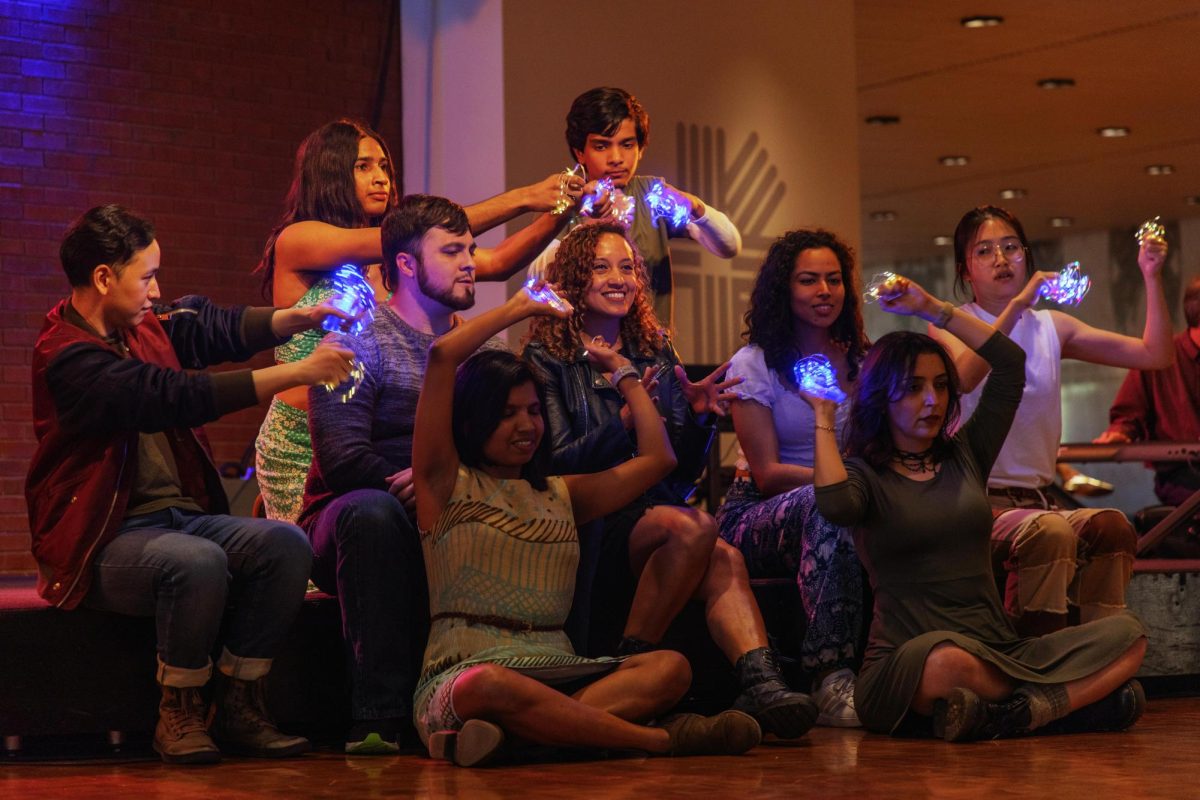On April 20, the Krannert Center held an arts and science celebration featuring music, dancing, theater and scientific exploration performed by CASCaDE (Collective for Art-Science, Creativity and Discovery, etc.).
This celebration was the official launch of CASCaDE, with the event designed to bridge the gap between the arts and science. Each segment of the showcase displayed how quantum physics and art could be incorporated together.
The event began with an introduction section of a play called “Quantum Voyages.” In the introduction “Light; What does it mean to See?” two voyagers, Akash and Terra, are led by a spirit of wisdom on an adventure into the quantum realm.
In this realm, they encounter quantum sages, which are actually real-life physicists. These quantum sages teach the voyagers and the audience about the basics of quantum physics.
University staff member Jon Faw has worked with Performance Director Latrelle Bright in the past and worked with her again in the performance of “Light; What does it mean to See?” Faw played Akash and said he thoroughly enjoyed the experience.
Get The Daily Illini in your inbox!
“I think my favorite part is … that (CASCaDE) is a bridge of something more academic and something more artistic,” Faw said. “I love that CASCaDE is exploring and destroying that barrier.”
After the play, the show continued by featuring members of the program and their contributions. One presenter, Stephen Taylor, professor in FAA, combined the principles of quantum physics and computing to create a musical piece for the audience. The show ended with a “Quantum Entanglement,” where audience members were invited on stage to dance.
Daniel Inafuku is a graduate student who recently defended his thesis on theoretical physics and biophysics. Inafuku was also a part of the theater performance and a member of the quantum ensemble and said he thoroughly enjoyed working with the other cast members.
“Just working with everyone and with the cast members — everyone has such wonderful personalities and brings unique features to every scene that they are in,” Inafuku said.
Soma Sarathy, seventh-grader and son of Creative and Scientific Director Smitha Vishveshwara, was another member of the quantum ensemble.
“The people last time were so great, and they are amazing this time, too,” Sarathy said.
In addition to the passionate performers, CASCaDE was brought to life with the immense talent and effort of Bright and Vishveshwara.
A professor in Engineering, Vishveshwara helped create CASCaDE through her classes MUS 499 and PHYS 495, called “Where the Arts Meets Physics.” She sought to bridge the gap between art and science.
“People say the left half and the right half of the brain (differ), where one of them is analytic and the other is creative, I don’t think so,” Vishveshwara said. “I think they (the arts and the science disciplines) both equally have creativity and analytic thinking, and all of it is needed to make something really good and beautiful.”
CASCaDE is premiered around the “International Year of the Quantum,” a proposal forwarded to the United Nations in collaboration with UNESCO, which will formally recognize 2025 as the international year of quantum physics and acknowledge its positive effects on the world.







